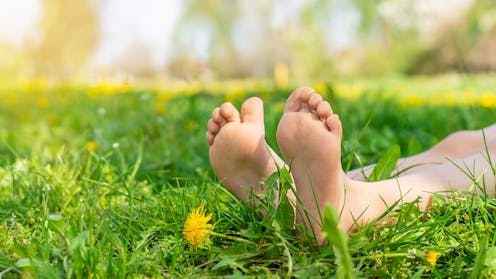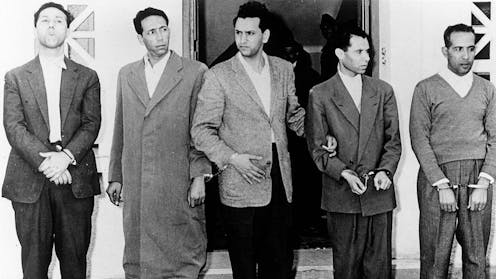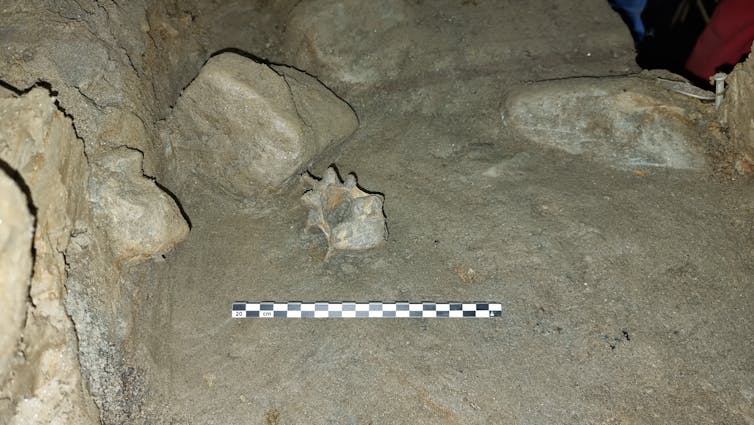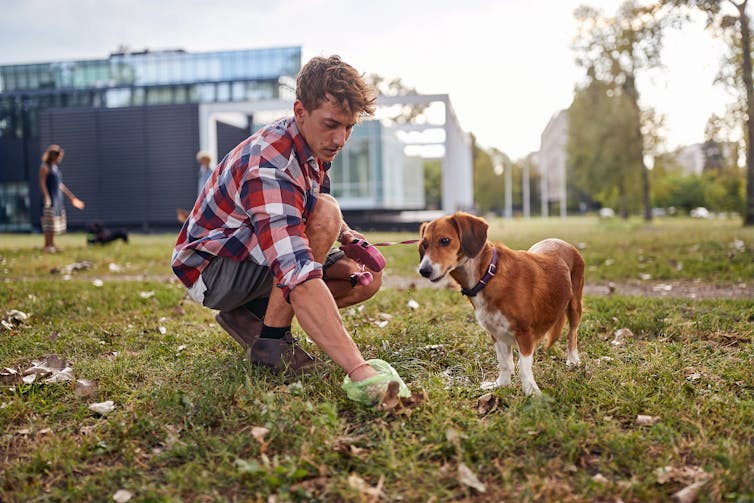Source: The Conversation – (in Spanish) – By Antonio César Moreno Cantano, Grupo de investigación Seguridad, Desarrollo y Comunicación en la Sociedad Internacional de la UCM (UCM-971010-GR96/20), Universidad Complutense de Madrid
Desde la irrupción de la tecnología digital, los videojuegos –al igual que tiempo atrás el cine, la televisión o la literatura– se han sumado como actores relevantes en el campo de la confrontación ideológica entre EE. UU. y el mundo islámico.
Cada cierto tiempo se publican noticias sobre determinados títulos que han sido censurados, o directamente prohibidos, porque en algunas de sus misiones, narrativas o aspectos gráficos se “vulneraban” elementos propios de su identidad política, religiosa o cultural.
Este formato interactivo constituye una nueva forma de “geopolítica visual”, pues no solo transmiten un mensaje a través de una narración o reproducen escenarios reales o ficticios mediante sus espectaculares gráficos, sino que crean un “espacio de simulación” de carácter emocional que anticipa o aproxima de manera directa todo aquello que nos llega a través de otros canales y fuentes de información. Esto permite, en muchas ocasiones, que el poder político se refleje en los juegos.
Estados Unidos e Irán se ven las caras en la ‘soft war’
Irán aparece como uno de los países más activos en dar réplica a los discursos y narrativas norteamericanas en el ámbito cultural. Esto ha llevado a prohibir afamadas creaciones como Battlefield 3, que ambientaba una de las misiones en la ocupación de Teherán por parte de los marines, ya la creación de múltiples videojuegos que rechazan la perspectiva occidental sobre la “Guerra contra el Terror”.
Este tipo de maniobras, que se extienden también contra Israel, se vinculan al concepto de soft war –“guerra blanda”–, eufemismo para referirse a la propagación de ideas, cultura e influencias extranjeras a través de las tecnologías de la información y la comunicación.
De esta manera, hace poco los medios persas anunciaban un nuevo videojuego que, con el nombre de True Promise, glorificaba los lanzamientos de misiles contra territorio israelí en abril y octubre de 2024.
Jugar como un soldado palestino
Bajo unas coordenadas similares se posiciona el videojuego propalestino Fursan al-Aqsa, que debido a sus contenidos ha recibido fuertes críticas y censura (la más reciente en Reino Unido, donde ha sido eliminado de la plataforma digital Steam) y ha sido calificado por europarlamentarios italianos como terrorista y antisemita. Como replicó su creador, Nidal Nijm, “es muy subjetivo llamar propaganda terrorista al hecho de jugar como un soldado palestino contra los soldados israelíes”.
Este género de producciones son la respuesta a gran número de videojuegos occidentales que, con una clara intención ideológica o escaso interés a los elementos culturales del mundo árabe e islámico, lo ha estereotipado como “enemigo”, “intolerante”, “violento” y “terrorista”, como indican algunos estudios sobre el tema.
Esta islamofobia videolúdica se plasma en varios ejemplos, algunos de ellos muy recientes. En noviembre de 2021, un jugador de Call of Duty: Vanguard denunciaba desde su cuenta de Twitter que en una escena aparecían tiradas en el suelo varias páginas del Corán. De inmediato, los responsables de este título emitieron una nota pública disculpándose: “Call of Duty está hecho para todos. La semana pasada se incluyó por error contenido insensible hacia la comunidad musulmana, que desde entonces ha sido eliminado del juego”.
Tiempo atrás, otro usuario alertó que en Call of Duty: Modern Warfare 2, en un mapa aparecían escrituras del Corán grabadas en el marco de una pintura situada en un baño, considerado un lugar totalmente inapropiado para este tipo de mensajes religiosos.
Junto al Corán, otro de los símbolos más sagrados del islam es la Kaaba (dentro de la Gran Mezquita de La Meca), considerada la “casa de Alá”, centro de peregrinación más importante para los musulmanes. En el videojuego de acción y aventura fantástico Devil May Cry 3, la Kaaba aparecía como la entrada a una fortaleza demoniaca, generando un gran malestar entre gran número de jugadores de este credo.
Protesta de la Universidad Al-Azhar de El Cairo
También ha suscitado polémica Fortnite, uno de los battle royale –género donde un gran número de jugadores compiten entre sí en un mapa que se reduce progresivamente, hasta que solo queda un jugador o equipo victorioso– más famosos a nivel mundial, con más de 350 millones de cuentas registradas en 2021. La Universidad Al-Azhar de El Cairo emitió una nota de protesta contra este título porque para poder avanzar a otro nivel y conseguir más premios había que destruir un edificio que simulaba la Kaaba: “Esto afecta a las creencias y al respeto propio de los jóvenes y subestima la importancia de sus santidades. Por ello, el centro reitera la prohibición de todos los juegos electrónicos que fomenten la violencia o contengan ideas falsas que distorsionen la fe o muestren desprecio por las creencias religiosas”.
Este rechazo se extendió a otros países como Indonesia, donde el Ministro de Turismo y Economía Creativa pidió la eliminación de Fortnite. La respuesta de Epic Games, responsable del mismo, fue que se trataba de la creación de un jugador particular y que “nuestro equipo respeta todas las religiones”.
Esta índole de controversias y simplificaciones en el mundo del videojuego, lejos de resolverse, van en aumento. Algunos informes de la Unión Europea advierten que muchas plataformas como Steam, Discord o Twitch contribuyen a la radicalización online, ya sea a favor de los grupos de extrema derecha (que hacen de la islamofobia uno de sus caballos de Troya) o como herramienta de gamificación terrorista (ISIS).
Frente a este tipo de prácticas, no resta más que alfabetización digital, respeto a la diversidad cultural y responsabilidad a los grandes estudios y compañías de videojuegos, desde Washington a Teherán.
![]()
Antonio César Moreno Cantano no recibe salario, ni ejerce labores de consultoría, ni posee acciones, ni recibe financiación de ninguna compañía u organización que pueda obtener beneficio de este artículo, y ha declarado carecer de vínculos relevantes más allá del cargo académico citado.
– ref. Islamofobia visual: el campo de batalla de la geopolítica también está en las pantallas de los videojuegos – https://theconversation.com/islamofobia-visual-el-campo-de-batalla-de-la-geopolitica-tambien-esta-en-las-pantallas-de-los-videojuegos-250541














